Q: What are you thoughts? Remind us what the red-wax seal means? It cleared Tibetan customs, right? But beyond that, do we know when they started and stopped using this type of seal? Was this seal essentially put onto everything? (i.e. a real antique and a tourist piece would both be given one of these?) Nate, 1209
A: Let me start with the red wax seal. The Nepalese customs department began taxing folk art items being sold to tourists and exporters in the middle 20th century. Masks got a seal on the rear. Then, around the beginning of the 21st, they stopped wasting time and money on this practice.
I think the demon mask looks great. Based on your three excellent photos, it appears to be old and used. Our viewers should know that you have become very successful at searching for authentic masks that can be purchased for a low price. Similar masks with provenance would sell for much, much more. What Nate is able to do takes a lot of knowledge. A



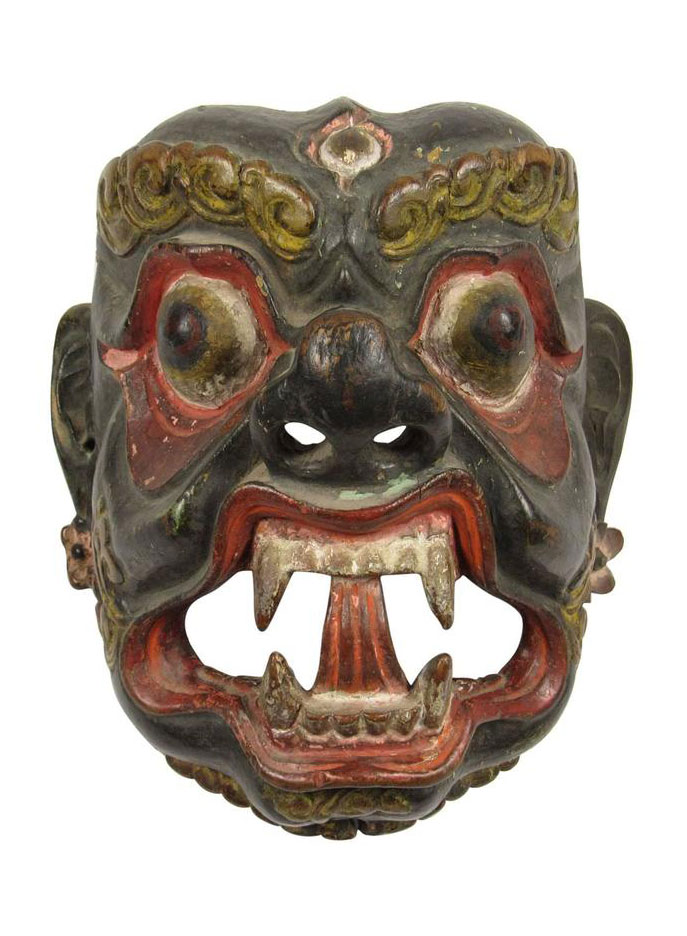
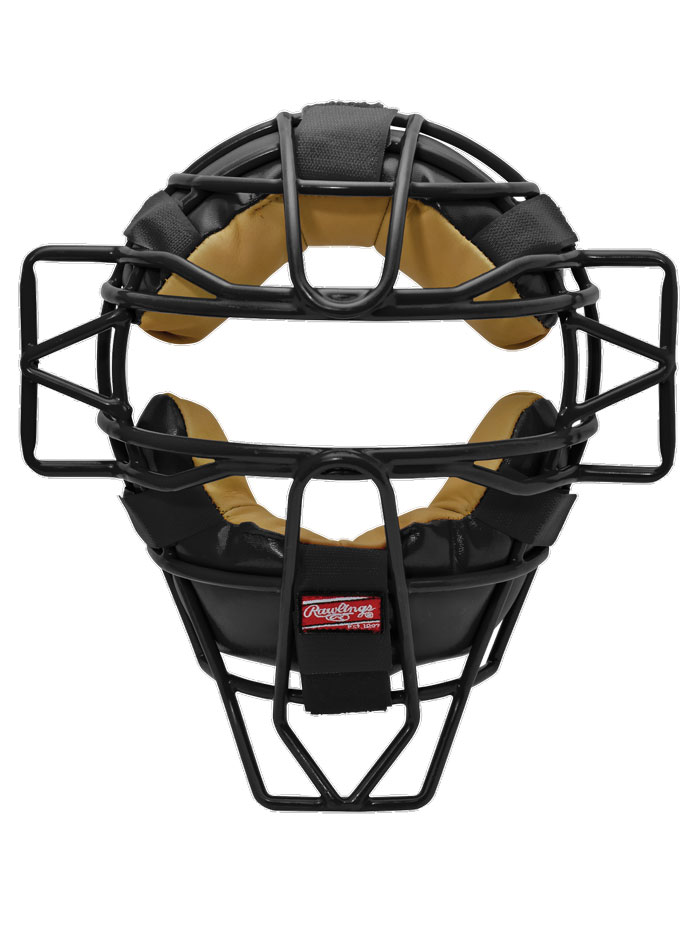
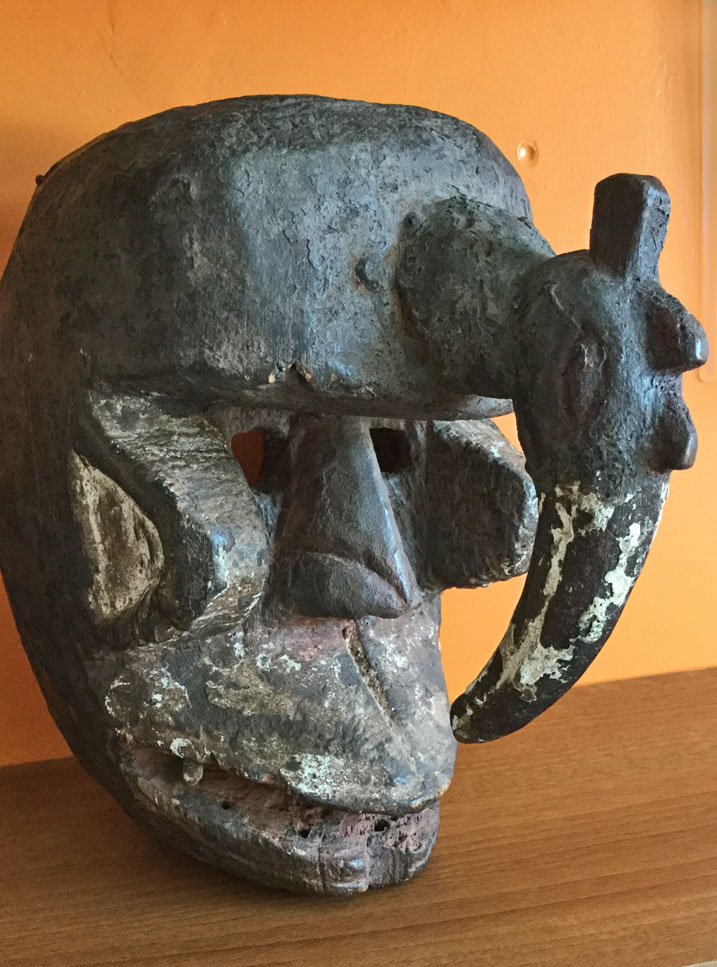
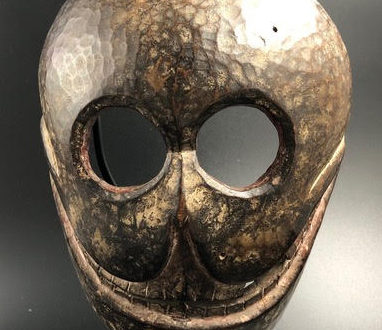
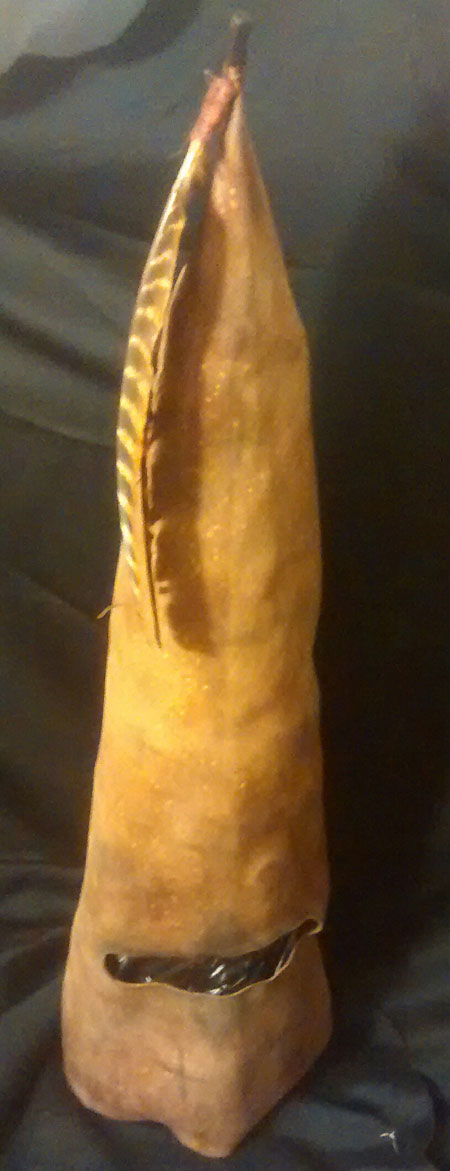

2 Comments
Chris
That is definitely a very fine mask. It is remarkable how much it has been used (evident by the polish of that hardwood), but that it still retains the fine details, like those four teeth, the tongue and the two flowers on the sides. It has clearly been taken much care of by its previous owners. The carving is great. I have a large, helmet-style Mahakala mask which has pretty much the same eyes, although it is not wood but some thick composite material. I have a general question, maybe you, Bob, have an idea on this: Nate’s mask, like many others, do not have eyeholes – how does the wearer see where he is moving? Does he actually need to see, or does this not matter? thanks for your insights, Chris
Nate
Chris — eyeholes in this case are the upward turned, flared nostrils… take another look…. the ergonomics work well for seeing out in fact..
Indian (continent) masks are some of the few that often have no eyeholes… but they are so over sides one can easily hold them juxtaposed ahead of them and just peek down at the floor from time to time behind the mask etc.